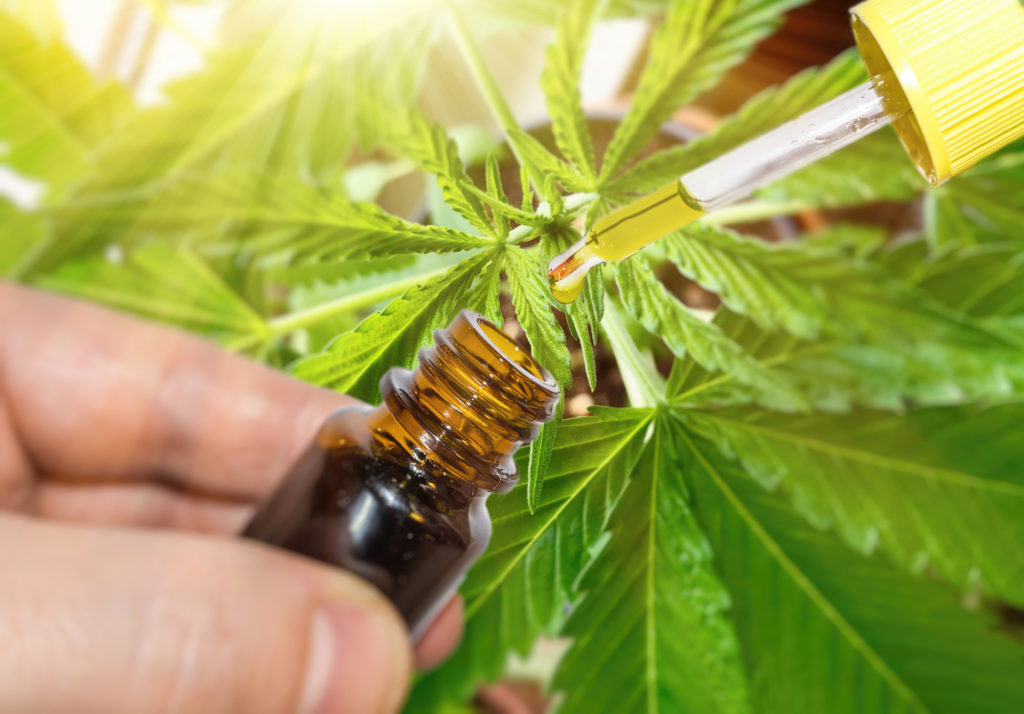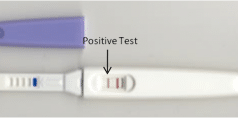
Did you know that medical marijuana is legal in 33 states as of the writing of this post? If you have heard the term decarboxylation and are wondering what is decarboxylation, you are in the right place. Whether you are new to the cannabis world or you are a seasoned consumer, there’s always something new to learn.
Keep reading to learn the ins and outs of the decarboxylation process.
What Is Decarboxylation?
First, let’s break down what decarboxylation is. This is the process of heating up cannabis in order to activate the compounds that are found within the plant. All cannabinoids that are in the trichomes of raw cannabis flowers have an extra ring attached to their chain.
Raw cannabis is carboxylated and it is non-psychoactive, while cannabis that is decarboxylated is psychoactive.
What Causes It?
The main way to decarboxylate is with heat and time. If you dry and heat cannabis, after some time it will cause a partial decarboxylation to occur. If you have ever heard of cannabis flower testing for both THC and THCA, this is the reason why.
Smoking and vaporizing cannabis will instantly decarboxylate cannabinoids because of the high temperatures. This makes it instantly available for absorption. But, edibles are a different story because they require you to absorb the cannabinoids through your digestive system.
What Is the Perfect Temperature?
The THC-A found in cannabis will start to decarboxylate at around 220 degrees Fahrenheit after about 30-45 minutes of heat exposure. If you are looking for a full decarboxylation you might need more time for it to occur.
There are some people that prefer to decarboxylate their cannabis at much lower temperatures and for much longer periods of time. The reason some people opt to do this is that they want to preserve the terpenes as much as possible.
Keep in mind that any temperatures above 300 degrees Fahrenheit will compromise the integrity of terpenoids and cannabinoids. For this reason, you want to stay in the 200s and ideally at 220 degrees.
Something else that you want to remember is that every oven fluctuates by 10 degrees in both directions. This means that you really want to stay in the lower 200s in order to ensure that you do not heat up the cannabis too much.
Why Is This Important?
If you are planning on consuming marijuana via edibles or tinctures this is a necessary process. You have to do this in order to activate the variety of cannabinoids found in the plant’s materials.
Decarboxylation activates all of the tetrahydrocannabinol (THC) and cannabidiol (CBD) that is found inside the plant, which means that unheated marijuana flowers leave the compounds in an inactive form.
Keep in mind that there are still benefits when you consume raw cannabis without heating up the cannabinoid acids. It still contains nutrients and vitamins. You can juice cannabis leaves or consume raw buds but it won’t cause any psychoactive effects.
If you prefer to have the psychoactive effects you will have to go through the decarboxylation process. This will convert the THC-A (a non-psychoactive cannabinoid acid) into THC (psychoactive cannabinoid acid). THC is the compound found in cannabis that will give you the euphoric feeling some cannabis users are looking for.
Advantages
When you decarb your cannabis before making edibles you are reducing the risk of botulism. This is bacteria that can grow on canna-oil and cannabutter when you just make edibles without decarbing your marijuana.
Another advantage is that you are activating the CBD, which is better even if CBD is not psychoactive. CBD strains also have to be heated in order to release their beneficial and therapeutic properties. Although your body can metabolize the CBD-A and break it down into CBD without heating it up, your cells have to work extra hard to make it happen.
How to Decarboxylate In an Oven
If you grow your own marijuana or you purchased cannabis flowers from your local dispensary, you can decarboxylate from home. You will need a few supplies to get started:
- Cannabis flower
- Grinder
- Baking Sheet
- Oven
- Parchment Paper
Once you have all of your supplies ready you can start the process and don’t forget to keep your oven at a low temperature. You want to protect the plant’s integrity and not lose its potency.
Any temperatures above 300 degrees will burn away the terpenes. These are the oils that work synergistically with cannabinoids and give them their unique scent and flavor.
Step-By-Step Directions
These are the exact steps you need to take in order to decarboxylate your marijuana at home:
- Preheat the oven to 220 degrees Fahrenheit
- Line your baking sheet with parchment paper
- Break the marijuana flower into small pieces
- Spread the pieces of flower on the parchment paper into a single layer
- Put the baking sheet in the oven
- Cook it for 30-45 minutes (stir the marijuana flower every 10 minutes)
- Remove the baking sheet from the oven when the cannabis color starts to darken
- Use the grinder or a food processor to grind the flower once it has cooled down
Once the cannabis is ground store it in an airtight container. You can use it as needed when you are ready to consume it.
Decarboxylating in a Mason Jar
You also have the option to decarboxylate in a mason jar instead. One of the main benefits of decarbing in a mason jar is that it minimizes strong odors from the cannabis. If you want to be more discreet then you might prefer a mason jar.
Another benefit is that the terpenes that evaporate stick to the glass of the jar and you can preserve the terpenes if you use the same jar for your infusion.
Step-By-Step Directions
Before you get started you will need to gather following:
- Mason Jar
- Baking tray
- Cannabis
- Oven gloves
- Kitchen towel
- Oven
- Set your oven to 220 to 240 degrees Fahrenheit
- Move the oven rack to the middle position
- Break up the cannabis until it’s the size of a grain of rice
- Put the cannabis into the mason jar and lightly screw the lid on
- Wet the kitchen towel lightly, lay it over the baking sheet, and then put the mason jar on the towel to help anchor the jar on the baking sheet
- Put the baking tray in the oven for 60 minutes
- Every 15 minutes remove the mason jar and shake it to help disperse the cannabis evenly
- Remove the jar from the oven after 60 minutes and then let it cool for 30 minutes
You can opt to store the cannabis to use it later or you can use it right after you allow it to cool down for at least 30 minutes.
Decarboxylating By Sous Vide
If you are feeling overwhelmed but still want to try decarboxylating yourself rather than buying it ready to go at your local marijuana store, sous vide is an almost fool-proof way. With this method, you will have a small investment up front, but if you are planning on cooking with cannabis regularly, this might be worth the investment.
You will need to buy an immersion circulator which usually starts at the $100 cost range. With this, you can dial in a lower and more exact temperature that will preserve terpenes and flavor while you produce pretty much no smell.
Ingredients and Step-By-Step Directions
Gather the following ingredients before you get started:
- Cannabis
- Grinder
- Immersion circulator
- Large pot or plastic tub to immerse the circulator
- Freezer bag or a vacuum sealer
- Fill up your container with hot tap water
- Place the immersion circulator inside (please follow the manufacturer’s guidelines to make sure you use the right amount of water in the container)
- Set the immersion circulator to 203 degrees Fahrenheit
- Grind the cannabis into fine small pieces (the finer the grind the better it will be for this method)
- In a zip-top freezer bag or a vacuum sealer, seal the cannabis as flat and as tight as possible to take out any air pockets. This is known as the water displacement method.
- Put the sealed bag into the water bath for 90 minutes
- Remove it and let it cool to room temperature for about 15-20 minutes
- Before you open the bag, dry it off carefully
- Open it and place your cannabis into a container to use for cooking in the future
Keep in mind that with this method the temperature is extremely precise. Because it is so precise, you do not have to worry about overheating any of the marijuana. You also don’t have to worry about destroying any of the flavor, the THC, or the terpenes.
How to Decarboxylate Kief
If you ever choose to decarboxylate the crystallized structures that stick to the surface of pure weed (also known as kief), this is also an option. You will have to first grind the cannabis into flakes and sift the kief out from the plant parts.
This will take a bit of patience because you have to manually pick out the kief. Once you sift through and pick out the kief, you will spread it over a baking sheet and put it in the oven for 45-60 minutes.
You will want to stay between 220 and 300 degrees Fahrenheit. Just like the cannabis flowers, you want to check on it every 10 minutes and stir it to make sure that it heats up evenly.
Raw Cannabis VS Decarboxylated
Raw cannabis is a plant that has yet to be cured or dried. When the plant is cured then a small amount of decarboxylation happens.
Raw cannabis still has the benefits in its uncured form. The acids that are found before the cannabis is cured (THC-A and CBD-A) both have anti-inflammatory effects. You can compare these effects to the types of vitamins and minerals found in other plant-based foods.
If you ever choose to consume raw cannabis, you want to use either the flowers when they are freshly picked or the fan leaves. You can store the raw marijuana in your refrigerator as long as other greens like spinach or kale. Just keep an eye out on any raw cannabis that you store because it is prone to mold and wilting.
Consuming Decarboxylated Cannabis
You have plenty of options on how to consume decarboxylated cannabis as long as you use low heat throughout the entire process. You can opt to still vape or smoke your marijuana after you decarboxylate it. It has been encouraged for the best possible experience.
Another way to use your decarboxylated cannabis is by infusing any recipes with cannabutter or with the marijuana itself. The cannabutter can come in handy to add to your toast in the morning or to bake goodies with.
Something else that you can do is create cannabis tinctures if you prefer ingesting a tincture. Truly your options are endless when it comes to using your cannabis.
Feeling Like a Decarboxylation Expert?
Now that we answered the question “what is decarboxylation?” you can choose whether or not you want to decarboxylate your own cannabis at home. If you are feeling overwhelmed with the process you can ask your local cannabis shop for a product that has already gone through the process that you can simply add to your food.
Did you learn something new today thanks to our blog post? Please bookmark our site and stay tuned for our very latest.
You May Like These Articles As Well:
Casino Industry Increasingly Moves Online








